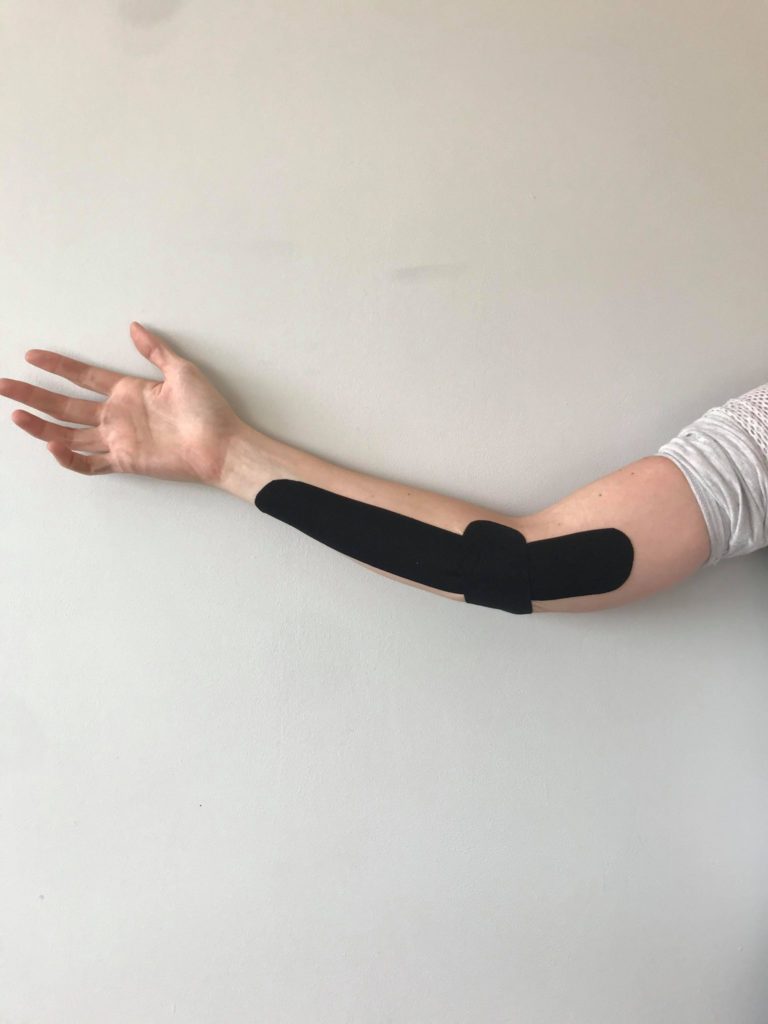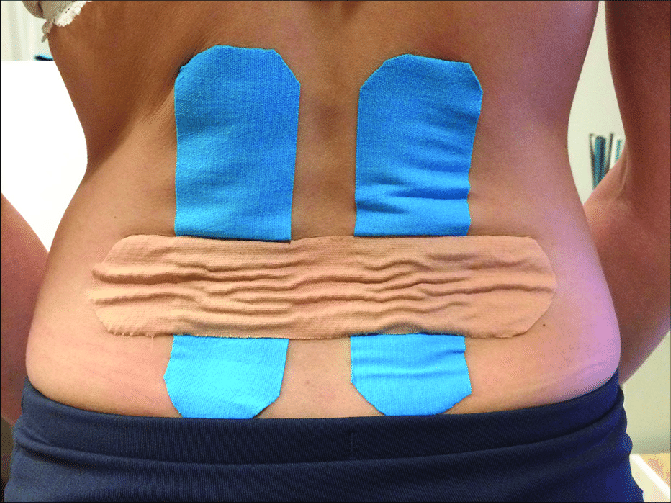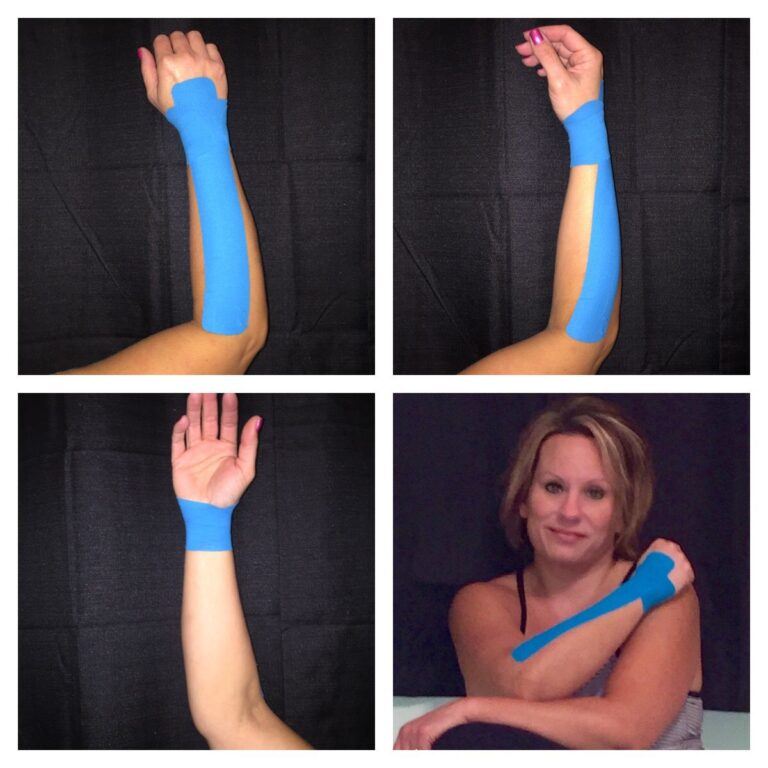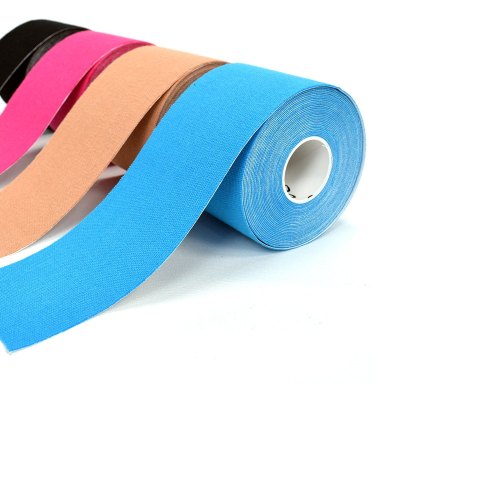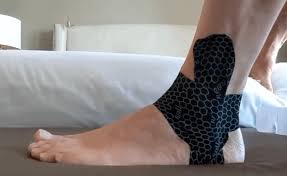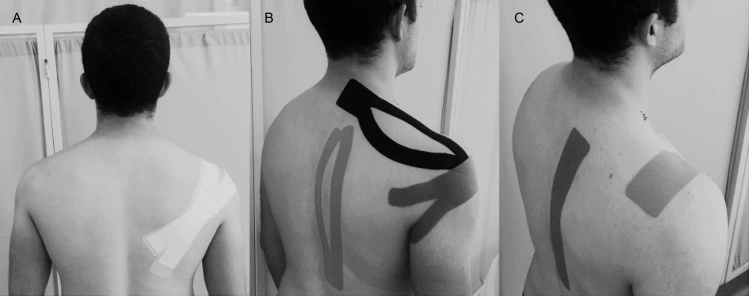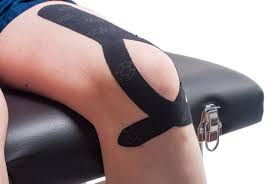Kinesiotapping for Golfers Elbow :
Table of Contents
Introduction :
Kinesiological tapping is a rehabilitative cum protective use of stretcheble tapes to provide reduction of pain also useful in Golfers Elbow Injury treatment.Benefits of Kinesiological Taping in Golfer’s Elbow are:
- enhancing performance
- preventing injuries
- support to the joint
- repositioning of structure
- facial and ligaments correction.
It facilitate and improve the healing process while providing full ROM with support to the joint supportive structure as well as mobilization effects to joints .
A golfers elbow is a condition that causes pain on the inner side of the elbow.
the cause is excess or repetitive stress on particular joint, often by the forceful wrist and finger motions.
The elbow may feel stiff. Hands and wrists may feel weak.
Golfer’s elbow, or medial epicondylitis, is tendinosis of the medial epicondyle on the inside of the elbow.
Related Anatomy :
The medial epicondyle of the elbow is the common origin of the flexor and pronator muscles of the forearm.
The pronator teres, flexor carpi radialis, palmaris longus, and flexor digitorum superficialis
originate on the medial epicondyle and this muscles are innervated by the median nerve.
The flexor carpi ulnaris muscle also inserts on the medial epicondyle and is innervated by the ulnar nerve.
Together these five muscles share the same origin, forming the conjoined flexor tendon of the
medial epicondyle of the humerus. Tendons of this muscle is approximately three centimeters long,
it crosses the medial ulnohumeral joint, and runs parallel to the ulnar collateral ligament
where it serves as a secondary stabilizer.
Introduction of golfer’s elbow

Tennis elbow, or lateral epicondylitis, is a painful condition of the elbow
caused by overuse of the wrist and fingers. Not surprisingly, playing tennis or other racquet sports
can cause this condition. However, several other sports and activities
besides sports can also put you at risk.
Tennis elbow is swelling or, in some cases, microtearing of the tendons
that join the forearm muscles on the outside of the elbow.
The forearm muscles and tendons become damaged from overuse of wrist and elbow
— repeating the same motions again and again.
This leads to pain and tenderness or swelling on the outside of the elbow.
Causes :
- Overuse
- Repetative activity
- Age
- Unknown
- Swimming Microscopic tearing
Symptoms :
- Tenderness and swelling on the outside of the elbow.
- Morning stiffness of the elbow with persistent pain.
- Soreness of the forearm muscles.
- Elbow pain is worse when grasping or holding an object or repetitive movement
(a sign that active inflammation is present because of the tendinitis)
-Strain on the elbow tendons.
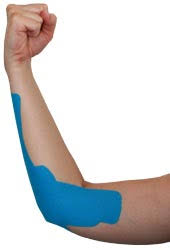
Kinesio taping for golfers elbow :
Taping has a good placebo pain relief effect and pain-free grip strength in patients with chronic tennis elbow. A study compared the effect of kinesio taping with exercises to sham tape with exercises and exercise only groups on patient-rated tennis elbow evaluation, visual analogue scale (VAS), grip strength, and the disabilities of the arm, shoulder, and hand (QuickDASH) scales.
The results of the study support the combination of kinesio tape and exercises.
- Application of kt Requires:
- 2 pices of Y tape
- 1 pices of I tape
STEP 1: Anchor Y tape at the front wrist and apply the tails over the lower arm towards
the elbow while bending the wrist backward .
STEP 2: Anchor another Y tape at the medial side of the elbow and apply the tail a cross
the arm.
STEP 3: Place the last I tape over the medial part of the elbow with 50% stretch applied
How to remove tape?
- So now you’ve got your tape on and you’ve gotten that extra support during your chosen sporting activity, it’s time to take it off, so let us ease the process of removing kinesiology tape for you. So now you’ve got your tape on and you’ve gotten that extra support during your
- chosen sporting activity, it’s time to take it off, so let us ease the process of removing kinesiology tape for you.
- The best tip we can offer when it comes to removing your kinesiology tape is to peel the skin from the tape, not the tape from the skin.
- But in terms of the actual process, firstly make sure you’re removing the tape in the same direction as the growth of the hair underneath it, and whatever you don’t rip the tape off like a plaster!
- Start slowly, folding the corners of the edge back gradually, ensuring that you’re laying the removed tape on the back of the applied tape, as opposed to pulling the tape above and away from your arm.
- As you’re peeling off the tape, hold your skin down with your other hand and either tap it or pull it gently in the opposite direction of the tape.
This helps the skin and the tape to separate more efficiently but with no discomfort.
If the tape has been applied over a particularly hairy part of the body,
it helps to press down on the tape as you are peeling it off, as the pressure helps avoid further pain. It’s wise to have shaved the area before applying the tape but,
as this isn’t always practical, taking this precaution will be necessary for some.
Need a little extra assistance? Apply oil directly onto the tape, rub it in and wait around 10 to 20 minutes before removing it slowly.
This will help reduce the stickiness of the tape and make it easier to remove.

